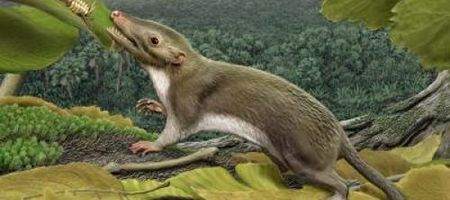Scientists believe they’ve identified the common ancestor that links human beings with all other placental mammals: a rat-sized creature that lived on insects.

University of Florida researchers analyzed the anatomy of living and fossil primates, including lemurs, monkeys and humans, as well as their closest living relatives, flying lemurs and tree shrews. And contrary to a commonly held theory, they say, the group diversified wildly after the extinction of dinosaurs 65 million years ago.
“With regards to evolution, it’s critical to understand the relationships of living and fossil mammals before asking questions about ‘how’ and ‘why,’ ” says Jonathan Bloch of the Florida Museum of Natural History.
“This gives us a new perspective of how major change can influence the history of life, like the extinction of the dinosaurs – this was a major event in Earth’s history that potentially then results in setting the framework for the entire ordinal diversification of mammals, including our own very distant ancestors.”
A visual reconstruction of the creature was made possible with the help of a cloud-based,d publicly accessible database called MorphoBank.
Researchers recorded observational traits for 86 placental mammal species, including 40 fossil species. The resulting database contains more than 12,000 images that correspond to more than 4,500 traits detailing characteristics like the presence or absence of wings, teeth and certain bones, type of hair cover and brain structures.
The team reconstructed the anatomy of the common ancestor by mapping the traits most strongly supported by the data. These suggest a two-horned uterus, a brain with a convoluted cerebral cortex and a placenta in which maternal blood came in close contact with membranes surrounding the fetus, as in humans.
In the past, the evolutionary history of placental mammals has been interpreted in very different ways, depending on what data the researchers focus on. One leading analysis, based on genomic data alone, suggests that a number of placental mammal lineages existed in the Late Cretaceous and survived the Cretaceous-Paleogene extinction.
“It has been suggested that primates diverged from other mammals well before the extinction of the dinosaurs, but our work using direct evidence from the fossil record tells a different story,” says Bloch.






